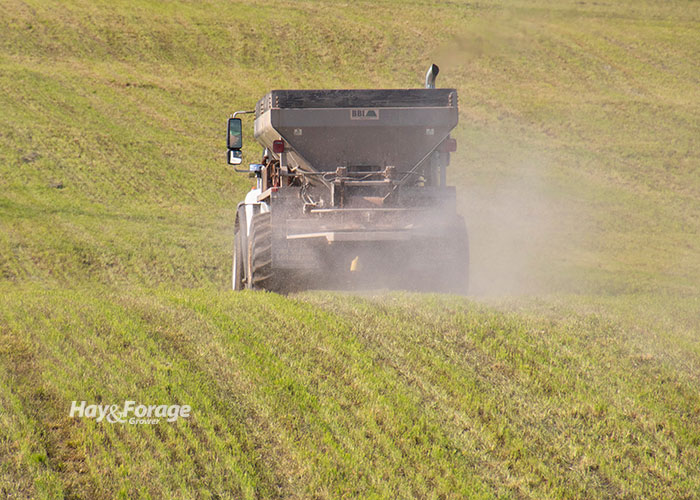Take a strategic hay fertilizer approach |
| By Mike Rankin, Managing Editor |
|
|
 You can’t starve a profit into a cow. The same can be said for a hayfield, according to Ohio State University Extension Educators Stan Smith and Chris Penrose. As fertilizer prices reach historic highs, it’s easy to simply take a pass or cut back on fertilizer targeted for hay production. This may or may not be a profitable decision. “We can’t afford not to properly and strategically fertilize a hay crop,” the extension educators assert. “But the operative word is ‘strategically.’” In a recent issue of the Ohio Beef Cattle Letter, Smith and Penrose suggest the following strategies to help offset the high price of fertilizer for hay production in the coming year. Have up-to-date soil tests: Accurate soil tests will pay big dividends in the upcoming year. They will determine which soil nutrients are likely to offer the most return on investment. Correct the soil pH: Smith and Penrose note that lime has gone up little, if any, in price during recent years. Correcting soil pH needs to be the first priority in times when fertilizer prices are high because this will optimize the efficiency of purchased fertilizer nutrients. Make the most of manure: Know the nutrient content of your manure and then apply it where it’s needed most based on soil test analysis. This will help minimize fertilizer expenditures. Take advantage of legumes: If hayfields have a high percentage of legumes, don’t waste money on nitrogen fertilizer. Let the legumes handle that chore. Grasses need nitrogen: Even expensive nitrogen fertilizer will pay dividends for grass hayfields. Smith and Penrose note that you might want to consider skipping an early spring application and applying 50 units of nitrogen after the first and/or second cutting to boost summer production. Protect the nitrogen: Urea-based fertilizers are subject to volatilization losses when applied to warm, dry soils. In these situations, use a stable source of nitrogen such as ammonium sulfate. If using urea, include a urease inhibitor to minimize losses when near-term rainfall isn’t forecasted. Let the soil test drive phosphorus (P) and potassium (K) decisions: If soil nutrient levels of P and K are at critical minimum levels, perhaps the only phosphorus and potash that needs to be applied in the coming year are the amounts removed through harvest. This can be done toward the end of the growing season if it looks like fertilizer prices will moderate. If P and K soil test levels are well above the critical minimum, one option is to skip applying additional fertilizer in 2022, realizing that soil test levels will be reduced. |
